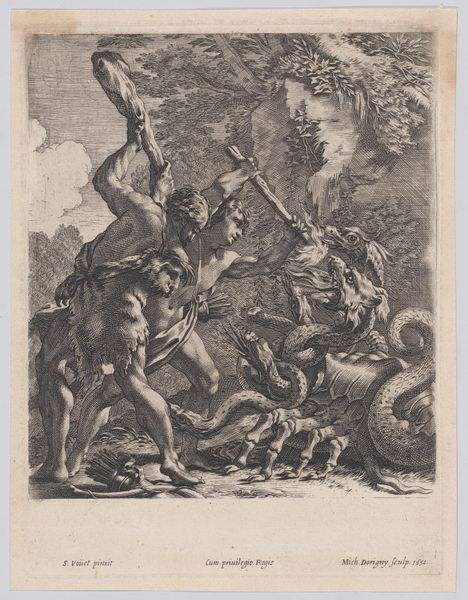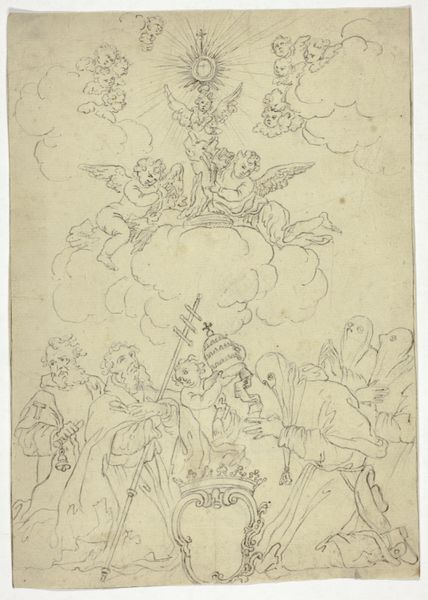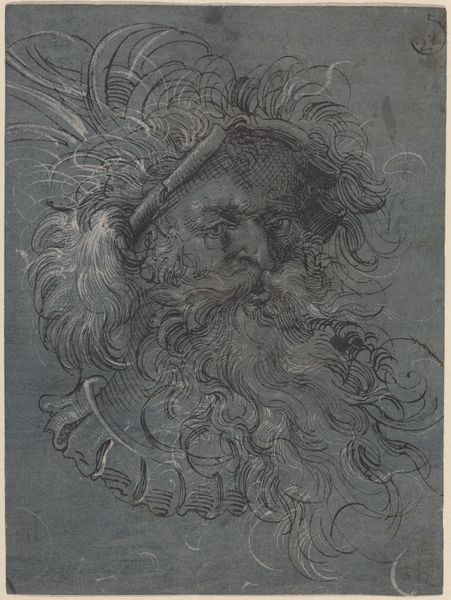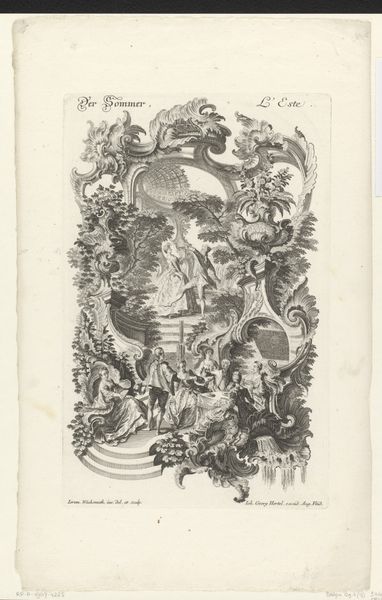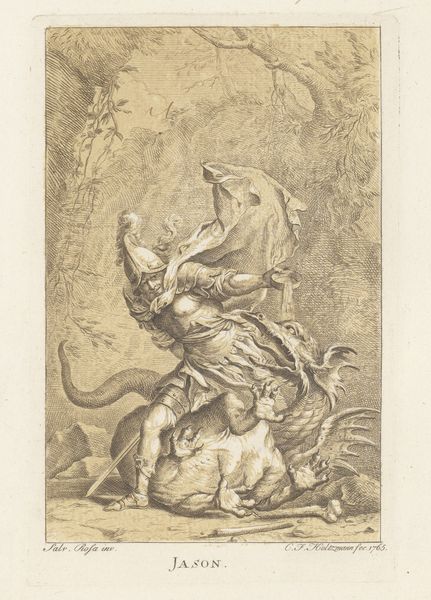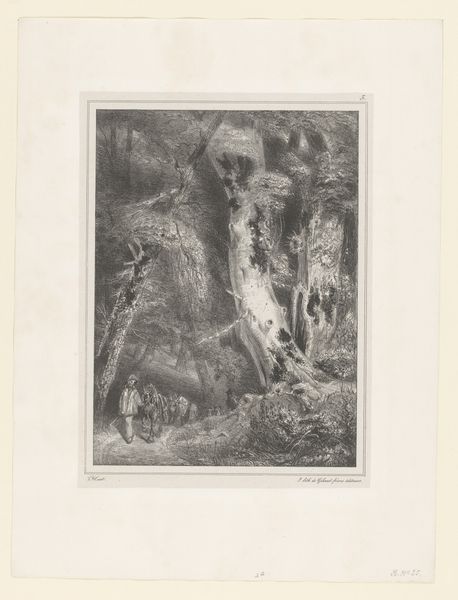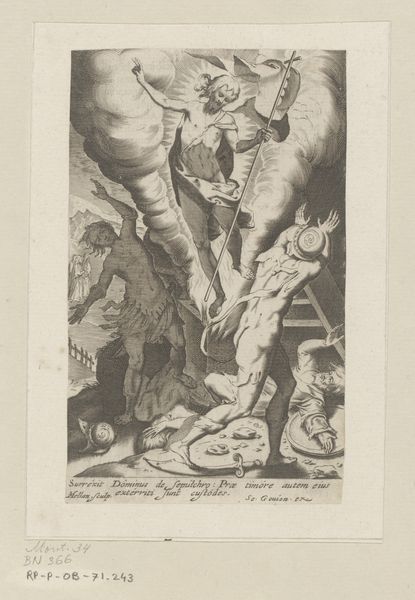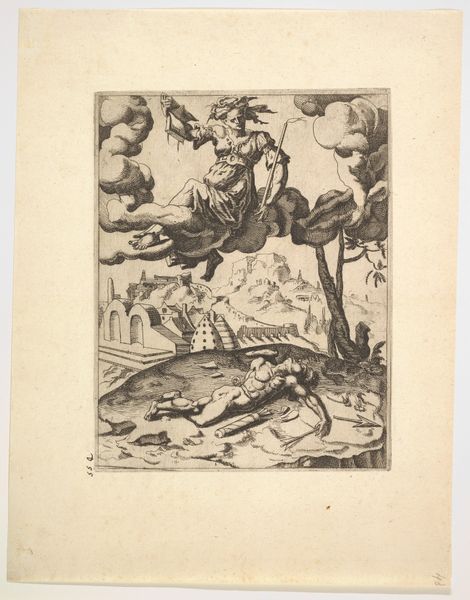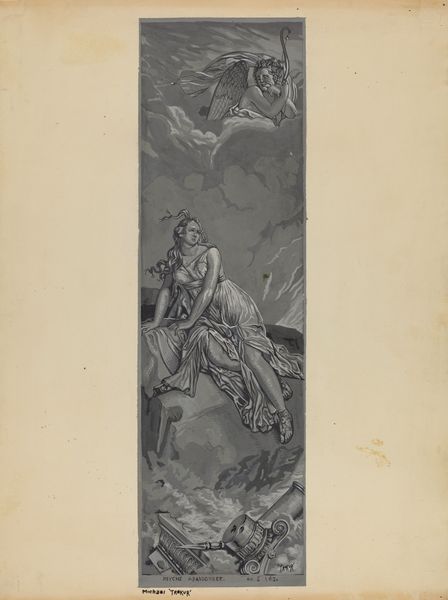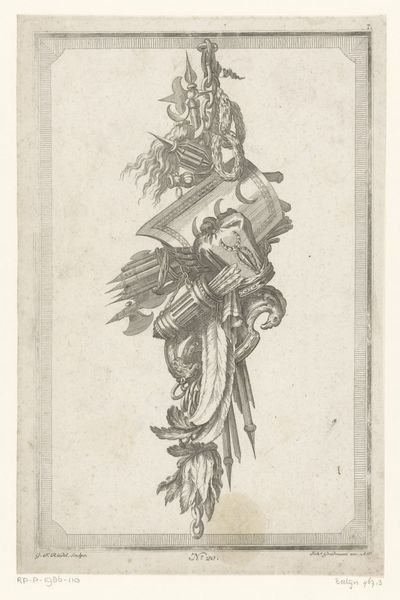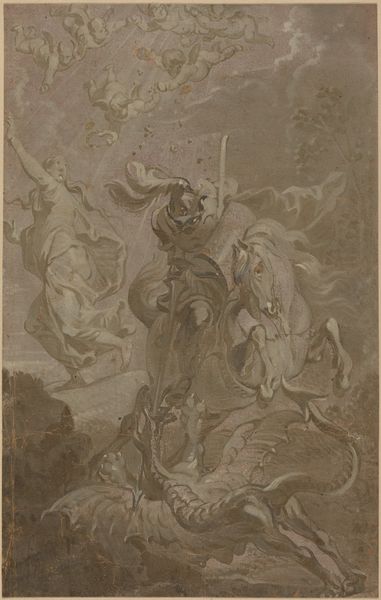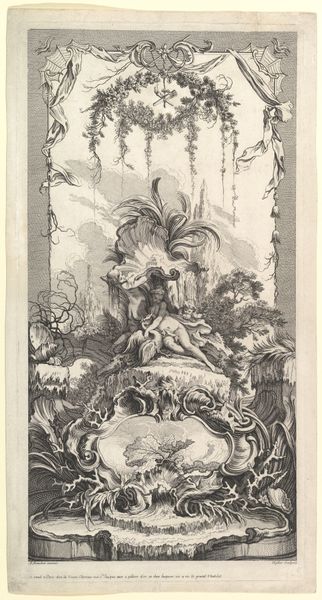
Dimensions: sheet: 10 7/16 x 6 7/16 in. (26.5 x 16.3 cm)
Copyright: Public Domain
Curator: The Archangel Michael Banishing Vice, created in 1782 by Franz Ludwig Hermann, employs ink, watercolor and engraving on toned paper to create this dramatic scene, currently held at The Metropolitan Museum of Art. Editor: Immediately, the overwhelming sense of weight strikes me. The monochromatic scheme amplifies this feeling. It's like a colossal relief sculpture rendered on paper. Curator: Exactly. The materials enhance this feeling. The choice to work primarily with engravings indicates this print was produced within an academic artistic environment, designed to cheaply spread a symbolic narrative widely among the European population. It allowed dissemination of the history painting theme on a broader scale than painted works allowed. Editor: So, beyond the spiritual message, there was a social intent. Consider how this imagery would be interpreted across different audiences. Those winged figures, those writhing forms below… Curator: Depictions like this legitimized certain hierarchies, reinforcing societal order. Angels over demons, good over evil... Editor: Right. But I'm also curious about Hermann's studio practices. Toned paper in 1782 suggests he was interested in shortcuts: pre-tinted paper reducing labor otherwise needed by the artist, compared with creating the same work in full color by hand. This is something affordable. Curator: Precisely. The market demanded such economies. Moreover, let’s think about what "Vice" actually *meant* at the time. Hermann is less interested in its individual components and more keen on emphasizing his interpretation. This reading inevitably informed both the commissioning and the consumption of these pieces within larger socio-political contexts Editor: I wonder if this "economical" choice changed how such engravings were seen... If their wider distribution made them "common", reducing the esteem they carried versus other artworks made for fewer patrons using costly materials? Curator: Good point, but the engravings were cheaper, while watercolors made them look good, and Hermann likely got a decent sum for it while the images shaped the population in general. Editor: Seeing how process, distribution, and politics blend like this really underscores how loaded even what might seem a "simple" work on paper can be. Thanks, it has given me lots to think about. Curator: It shows the multilayered significance artworks can contain.
Comments
No comments
Be the first to comment and join the conversation on the ultimate creative platform.
